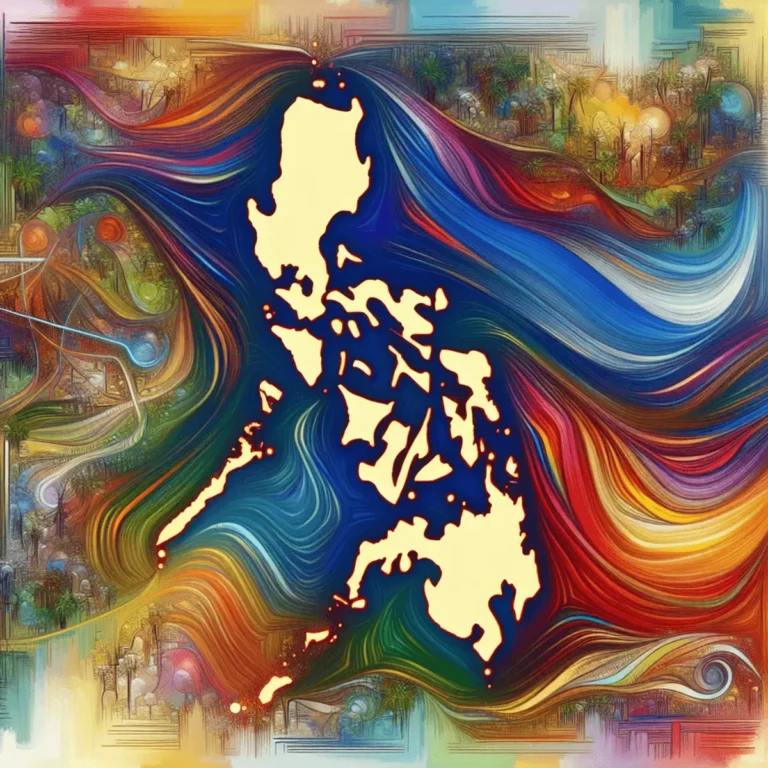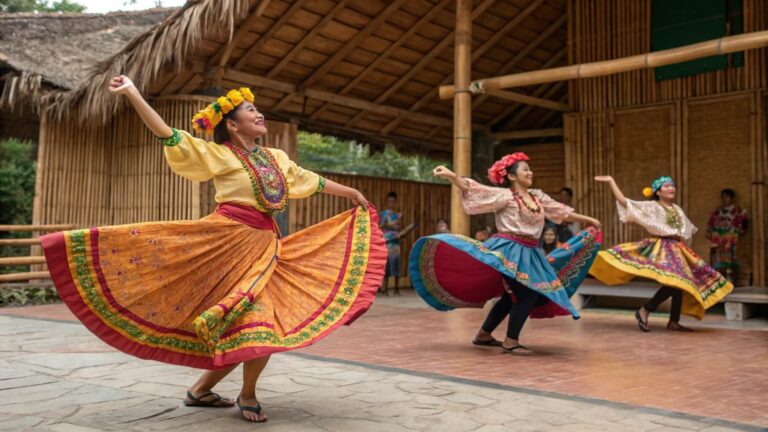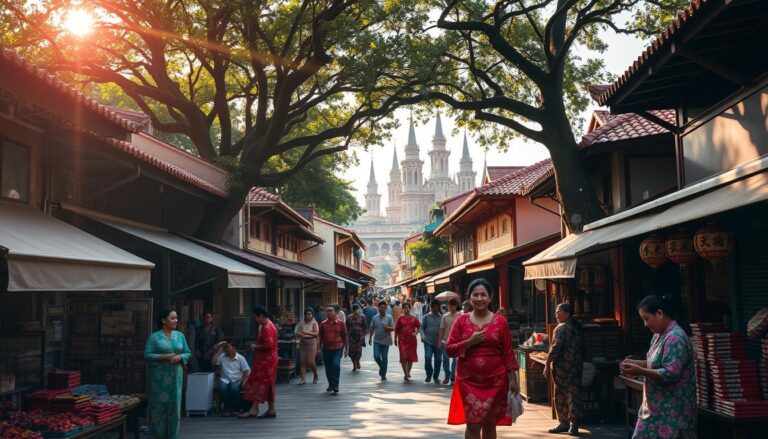The Cariñosa: A Timeless Dance of Love and Filipino Heritage
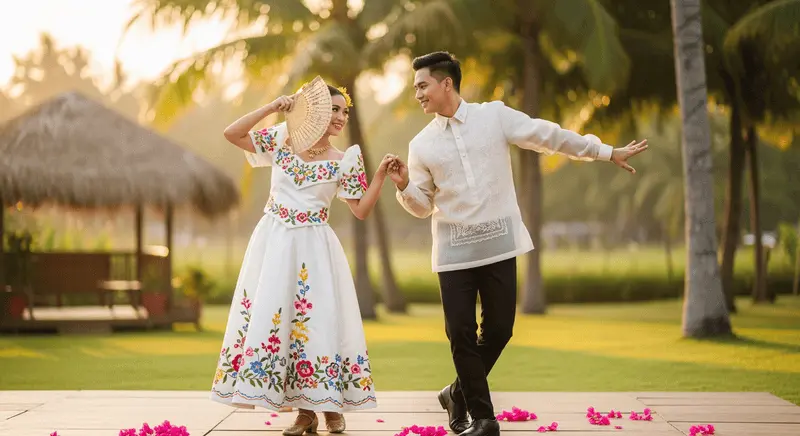
The Cariñosa emerged during the Spanish colonial period in the Philippines, which lasted from 1565 to 1898. The dance represents a synthesis of Spanish ballroom traditions and indigenous Filipino courtship customs, creating a hybrid art form that reflects three centuries of cultural exchange.
Spanish colonizers introduced structured partner dances featuring close physical proximity and formal gestures. Filipino communities adapted these elements, incorporating local movements that emphasized respectful distance and indirect expression of romantic interest. This modification aligned with pre-colonial Filipino courtship practices, where admiration was conveyed through symbolic gestures rather than direct physical contact.
The dance functions as a theatrical representation of courtship, with prescribed movements that communicate affection while maintaining social propriety. Its choreography mirrors the hierarchical social structures of colonial Philippines, where romantic relationships followed strict protocols of modesty and restraint.
The Panay Island Connection
Panay Island in the Visayas region is recognized as the birthplace of the most widely performed version of Cariñosa. The Visayan interpretation features distinct choreographic elements that differentiate it from variations developed in other Philippine regions.
The Panay version incorporates specific footwork patterns and arm movements unique to Visayan cultural traditions. Dancers execute smaller, more controlled steps compared to Luzon variations, reflecting regional preferences for subtlety in emotional expression. The tempo in Visayan performances typically maintains a moderate pace, allowing dancers to emphasize precision in gesture and posture.
Regional identity manifests through costume variations and musical arrangements. Panay Island communities preserve specific instrumental combinations and melodic patterns that distinguish their Cariñosa performances from those in Luzon or Mindanao.
The Cariñosa in the Maria Clara Suite
Defining the Maria Clara Suite
The Maria Clara suite comprises a collection of traditional Filipino dances characterized by feminine grace and colonial-era aesthetics. Named after the literary character Maria Clara from José Rizal’s novel “Noli Me Tángere,” the suite embodies ideals of feminine modesty, refinement, and virtue promoted during Spanish rule.
Cariñosa holds prominence within this suite as the primary courtship dance. While other dances in the collection emphasize elegance and deportment, Cariñosa specifically narrates romantic interaction between partners. The dance progresses through stages that mirror traditional courtship phases: initial acknowledgment, tentative approach, playful interaction, and mutual understanding.
The suite served dual purposes in colonial society: entertainment for elite classes and instruction in socially acceptable behavior. Performances reinforced cultural expectations regarding gender roles and romantic conduct.
Symbolism and Choreography
Cariñosa choreography employs a vocabulary of gestures that communicate specific romantic sentiments. Dancers maintain eye contact to signal mutual interest, then avert their gaze to demonstrate modesty. Hand movements trace graceful arcs, suggesting both invitation and hesitation.
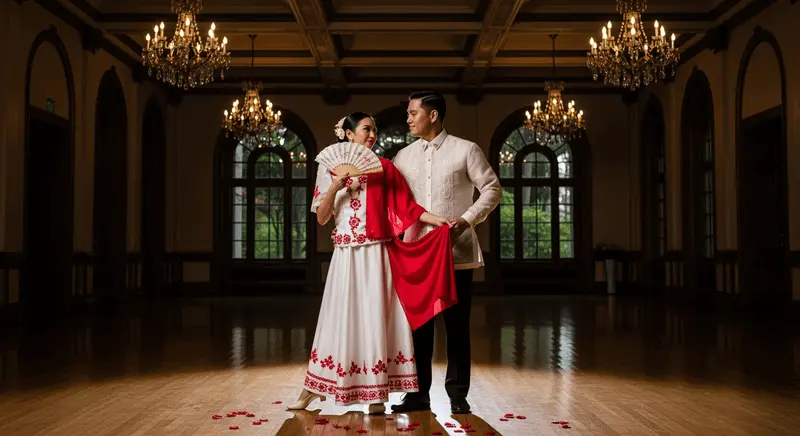
The fan serves as a physical barrier and communication tool. Female dancers use fans to partially conceal their faces, revealing and hiding their expressions in rhythmic patterns that suggest coyness or approval. Specific fan positions convey different meanings: held open before the face indicates shyness, while rapid fluttering suggests excitement or playful rejection.
The handkerchief represents offering and acceptance. Male dancers present handkerchiefs to their partners, who may accept, decline, or playfully evade the gesture. This prop-based interaction creates narrative tension and resolution within the performance.
Spatial relationships between partners shift throughout the dance. Initial positions maintain significant distance, which gradually decreases as the dance progresses. The final movements often include synchronized steps that unite the dancers briefly before they separate again, symbolizing the temporary nature of courtship encounters in conservative social contexts.
Music and Rhythm of the Cariñosa
Traditional Folk Instruments
Cariñosa performances traditionally feature a rondalla ensemble, the Filipino string band that developed during Spanish colonization. The core instruments include bandurria (fourteen-string mandolin), octavina (eight-string mandolin), guitar, and bajo de uñas (Filipino bass guitar).
The bandurria provides the primary melody, producing bright, sharp tones that carry the dance’s melodic themes. Octavinas play harmonic support and countermelodies, filling the middle register. Guitars maintain rhythmic foundation through strumming patterns adapted from Spanish bolero and habanera styles.
Spanish influence appears in the 3/4 time signature and waltz-derived rhythmic patterns. However, Filipino musicians modified these structures, incorporating syncopation and rhythmic variations that distinguish Cariñosa music from European models. The result is a melodic structure that sounds familiar to Spanish sensibilities while maintaining distinctly Filipino musical characteristics.
The Folk Ensemble and Dance Flow
Musical phrasing directly corresponds to choreographic sequences. Each melodic phrase signals a specific movement section, with dancers timing their gestures to align with musical accents and cadences.
The music follows an AABA structure, with contrasting sections that guide dancers through different emotional stages. The A sections feature consistent melodic patterns that accompany basic courtship gestures. The B section introduces melodic variation, corresponding to more complex or playful interactions between dancers.
Tempo remains relatively constant at approximately 120-144 beats per minute, though regional variations exist. Visayan performances tend toward slower tempos that emphasize graceful movement, while Tagalog versions may adopt brisker pacing.
Musicians and dancers maintain continuous awareness of each other during performances. Ensemble leaders watch dancers to ensure musical timing aligns with movement, occasionally adjusting tempo or repeating phrases to accommodate performance needs.
Traditional Attire and Presentation
The Maria Clara Gown and Barong Tagalog
Female dancers wear the Maria Clara gown, a formal dress that combines Spanish and Filipino design elements. The gown consists of four components: the camisa (blouse with butterfly sleeves), the saya (long wrap-around skirt), the pañuelo (stiff neck covering), and the tapis (overskirt).
The camisa features translucent fabric, typically piña (pineapple fiber) or jusi (silk-abaca blend), with intricate embroidery. Butterfly sleeves extend from the shoulders, creating a bell shape that emphasizes arm movements during dance. The saya reaches floor length, constructed from richly colored fabric with patterns or borders. The pañuelo frames the face and covers the shoulders, reinforcing cultural emphasis on modesty.
Male dancers wear the barong Tagalog, an embroidered formal shirt worn untucked over dark trousers. Traditional barongs use piña or jusi fabric with intricate embroidery patterns visible through the translucent material. The garment’s length typically reaches mid-thigh, and it is never tucked in, distinguishing Filipino formal wear from Western shirt conventions.
Black dress pants and formal shoes complete the male costume. Some regional variations include specific accessories like formal hats or sashes, though these are not universal.
Visual Elegance on Stage
Costume colors create visual contrast and symbolic meaning. Female dancers typically wear light colors—white, cream, or pastels—representing purity and femininity. Male attire features darker colors that ground the visual composition and highlight the female dancers’ movements.
Fabric selection affects movement quality. The lightweight, flowing materials of both costumes respond to dancers’ movements, creating secondary motion that enhances visual impact. Sleeves, skirts, and the barong’s loose fit produce subtle movements even during stillness, adding depth to stage presentation.
Props integrate seamlessly with costumes. Fans match or complement gown colors, while handkerchiefs provide color accents. These items remain visible throughout the performance, serving both functional and aesthetic purposes.
Stage lighting emphasizes fabric translucency and embroidery detail. Traditional performances use warm lighting that highlights the natural colors of piña and jusi fabrics, though contemporary productions may employ varied lighting schemes.
The Courtship Narrative in Movement
The Dance of Affection
Cariñosa choreography progresses through distinct phases that mirror traditional Filipino courtship stages. The dance opens with dancers positioned at opposite sides of the performance space, representing initial separation and mutual awareness.
The first phase involves tentative approach movements. Dancers advance toward each other with measured steps, maintaining forward-facing orientation and minimal eye contact. This section communicates initial interest while respecting social boundaries.
The second phase introduces direct interaction. Partners face each other, executing synchronized or complementary movements. Eye contact increases, though dancers periodically avert their gazes. Smiles and slight nods indicate growing comfort and mutual approval.
The third phase incorporates playful elements. The female dancer may retreat as the male advances, creating a pursuit dynamic that remains gentle and respectful. These movements represent the testing and teasing that characterized traditional courtship, where romantic interest required demonstration rather than direct declaration.
The final phase brings dancers into closer proximity, though physical contact remains minimal and formal. Partners may briefly hold hands or execute movements that require coordination, symbolizing mutual agreement and partnership.
Throughout these phases, dancers maintain upright posture and controlled movements. Emotional expression occurs through subtle facial changes and gesture quality rather than dramatic physical expression.
The Fan and Handkerchief Ritual
The fan serves multiple functions in Cariñosa choreography. Female dancers use fans to create barriers between themselves and male partners, then remove these barriers to signal acceptance. Opening and closing the fan provides rhythmic punctuation to movements, adding visual interest and emphasizing musical accents.
Specific fan positions carry coded meanings. Holding the fan before the face with only the eyes visible suggests shyness or uncertainty. Positioning the fan beside the face while glancing over it indicates playful interest. Rapid fanning suggests agitation or excitement, while slow, deliberate movements communicate thoughtful consideration.
The handkerchief functions as an offering object. Male dancers present handkerchiefs to female partners in various ways: extending it directly, placing it on the ground for retrieval, or waving it to attract attention. Female responses range from immediate acceptance to playful evasion, creating dramatic tension.
Regional variations alter these prop dynamics. Luzon versions often feature more direct handkerchief exchanges, with clear acceptance or refusal. Visayan interpretations incorporate extended teasing sequences, where the female dancer repeatedly evades before eventual acceptance. These differences reflect regional variations in courtship customs and social norms.
Props require specific handling techniques. Dancers learn precise grips and manipulation methods to ensure smooth, visually appealing movements. Dropped or mishandled props disrupt performance flow and narrative coherence.
The Cariñosa as a Symbol of National Identity
From Regional Dance to National Symbol
The Philippine government officially designated Cariñosa as a national folk dance in the mid-20th century, part of broader efforts to establish unified national cultural identity following independence from American rule in 1946.
This designation reflected the dance’s widespread recognition across Philippine regions and its embodiment of values considered central to Filipino identity: hospitality, romance, modesty, and respect for tradition. Unlike dances specific to single ethnic groups or regions, Cariñosa’s variations existed throughout the archipelago, making it suitable as a unifying cultural symbol.
The National Commission for Culture and the Arts (NCCA) and the Cultural Center of the Philippines (CCP) promoted Cariñosa through official performances, cultural programs, and educational initiatives. Government-sponsored dance companies included Cariñosa in repertoires presented at international events, using the dance to represent Filipino culture abroad.
This elevation to national symbol transformed Cariñosa from regional folk practice to official cultural representation. The standardization required for national recognition led to codified choreography and costume specifications, though regional variations continued in local practice.
Preserving Cultural Heritage
Philippine educational institutions integrated Cariñosa into physical education and cultural arts curricula beginning in the 1950s. Students learn basic steps and movements as part of national heritage education, ensuring generational transmission of the dance tradition.
Folk dance organizations and cultural groups maintain more detailed traditions and advanced choreography. Groups like Bayanihan Philippine National Folk Dance Company, Ramon Obusan Folkloric Group, and Filipinescas Dance Company specialize in preserving and performing traditional dances, including multiple Cariñosa variations.
These organizations conduct research to document regional variations, interview elder practitioners, and reconstruct historical versions. Their performances balance authenticity with theatrical presentation requirements, adapting traditional forms for contemporary audiences while maintaining core elements.
Cultural festivals throughout the Philippines feature Cariñosa performances, particularly during celebrations of Philippine Independence Day (June 12) and National Arts Month (February). These events provide performance opportunities and public engagement with traditional culture.
Filipino diaspora communities worldwide maintain Cariñosa practice as cultural connection. Community centers and cultural associations in countries with significant Filipino populations offer dance classes and organize performances, using Cariñosa to transmit cultural identity to Philippine-descended generations born abroad.
Conclusion – The Enduring Grace of Cariñosa
Cariñosa persists as a living tradition that connects contemporary Filipinos to historical cultural practices. The dance preserves courtship customs, musical traditions, and aesthetic values from multiple historical periods, functioning as embodied cultural memory.
Its continued practice in educational settings, cultural performances, and community celebrations ensures ongoing relevance. Each performance transmits not only movement patterns but also cultural values: respect in romantic relationships, appreciation for grace and restraint, and pride in distinctive Filipino artistic traditions.
The dance’s adaptability has enabled its survival through political changes, cultural shifts, and modernization. While maintaining core choreographic and musical elements, Cariñosa accommodates contemporary performance contexts and technological developments in cultural preservation.
As a national symbol, Cariñosa represents Filipino cultural identity domestically and internationally. Its combination of indigenous and colonial influences reflects the Philippines’ complex historical experience, while its emphasis on romance, respect, and beauty articulates enduring cultural priorities. The dance remains a tangible expression of Filipino heritage, connecting past traditions to present communities and future generations.

